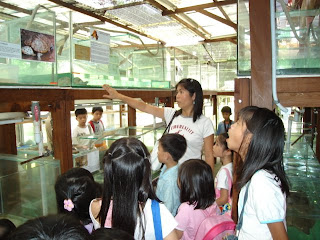Hand Foot and Mouth Disease

Hand-foot-and-mouth disease (HFMD) is caused by the Coxsackie virus and Enterovirus 71. The throat and tonsils develop small ulcers while the hands, feet, and diaper area are affected by a rash with characteristic vesicles (very small blisters). This is usually a mild illness with the rash healing in 5 to 7 days.

HFMD is spread from person to person by direct contact with the nasal discharge, saliva, faeces and fluid from the rash of an infected person. Both adults and children can be affected, but young children below five years are particularly susceptible.
Symptoms:
- fever
- sore throat
- ulcers in the throat, mouth and tongue
- headache
- a rash with vesicles (small blisters, 3-7 mm) on hands, feet and diaper area. The vesicles are typically on the palm side of the hands the sole side of the feet and very characteristic in appearance
- loss of appetite

Treatment
There is no specific treatment for the infection. Symptomatic treatment is given to provide relief from fever, aches and pain.
Treatment with antibiotics is not effective and is not indicated. Acetaminophen can be used to treat fever. Aspirin should not be used in viral illnesses in children under age 12 years.
Salt water mouth rinses (½ teaspoon of salt to 1 glass of warm water) may be soothing if the child is able to rinse without swallowing. Ensure an adequate fluid intake because swallowing may be painful. Extra fluid is needed when a fever is present.
Advice for parents
Parents are advised to consult a doctor early if their child has symptoms of HFMD. They should also be alert to any change in their child's normal behaviour, e.g. irritation and sleepiness. Should they refuse to eat or drink, have persistent vomiting or drowsiness, parents should bring their child immediately to hospital.
Prevention
Children should be kept away from crowded public places (such as schools, preschools, play groups, markets and public transport) if they show signs of infection. Family members are advised to follow good hygiene practices, including frequent hand washing, to limit the spread of the infection.
Latest News (Dated: 5 April 2008)
S'pore fast HFMD test kit a world's first
By: TODAY
SINGAPORE is developing the world's first diagnostic kit for Hand, Foot and Mouth Disease (HFMD) that will help detect the virus in febrile children within 10 to 20 minutes.
This means that children with the highly contagious HFMD can be picked out and quarantined sooner, thus minimising the chances of their passing on the virus to their peers.
The rapid diagnostic kit is being developed jointly by Singapore-based Rockeby biomed and the National University of Singapore's (NUS') medical school with a $200,000 grant from the Economic Development Board.
Currently, the diagnosis of HFMD — a common childhood disease — is symptomatic, which means that children are being screened for the virus only when they show up with a rash with blisters on their palms and soles, and mouth ulcers.
The HFMD test kit, however, will be able to detect the virus in a child who has fever, since the NUS medical school's paediatric department has identified a marker in the viral protein that can be used in the kit.
"Fever can mean a lot of things in our climate and viral fever can have many causes," said Rockeby biomed's chief executive, Dr Tan Sze Wee. "Hopefully, this test will allow better diagnosis of HFMD."
Currently, there is an outbreak of HFMD in Singapore, with 702 cases reported last week, bringing the total number this year to 4,423 cases. Last year, Singapore registered a record of 20,005 cases.
Of the cases in the first 12 weeks of this year, 21 per cent of virus isolates tested positive for the deadly Enterovirus 71 (EV71) strain of the HFMD virus, which the test kit would target.
EV71 has been associated with serious complications. In 2000 and 2001, EV71 killed more than 70 children in Asia, including seven in Singapore.
The test kit may be available in hospitals and clinics in three to four years, said Dr Tan.
Information retreived: Health Promotion Board
Photos: KK Women's and Children's hospital

 Hehe, look what i have on my hands! I am going to feed the turtles!
Hehe, look what i have on my hands! I am going to feed the turtles! Teacher Ah Yi introducing the different species...
Teacher Ah Yi introducing the different species... Come, studentcare let's take a photo!
Come, studentcare let's take a photo!



















